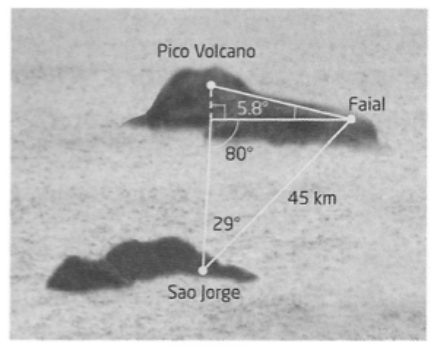Reference no: EM132303080
Assignment Questions -
Q1. The coordinates of a point on the terminal arm of an angle θ are given. Determine an exact value for all six trigonometric ratios of θ.
a) G(-8, 6)
b) L(6, -2)
Q2. One of the primary trigonometric ratios for an angle is given, as well as the quadrant in which the terminal arm lies. Find the other two primary trigonometric ratios.
sin A = - 2/3, third quadrant
Q3. Determine two angles between 0o and 360o that have a cotangent of -1.
Q4. When the sun hits the CN Tower in the afternoon, the CN Tower casts a shadow 659m long. If the angle of elevation of the sun is 40o, how tall is the CN Tower?
Q5. The average distance from the Earth to the Sun is 1 Astronomical Unit (AU for short). The average distance from Jupiter to the Sun is 5.2AU. If the angle between the Earth, the Sun, and Jupiter is 145o, how far away is Earth from Jupiter?
Q6. For each of the following, draw possible diagrams that match the given measurements. Then, calculate the length of side c. There may be more than one answer. If the calculation cannot be made, explain why.
a) In Δ ABC, a = 13cm, b = 21cm, and ∠A = 29o
b) In Δ ABC, a = 18m, b = 21m, and ∠A = 63o
c) ln Δ ABC, a = 24m, b = 21, and ∠A = 75o
Q7. While visiting relatives in the Azores Islands, Juan sails from his home on Sao Jorge to Faial, a 45-km ferry ride. From Faial, he measures the angle of elevation to the Pico volcano at 5.8o and the angle of separation between the base of the volcano and Sao Jorge as 80°. When he return to Sao Jorge, Juan measures the angle of separation of Faial and the base of the Pico volcano as 29o. Use this information to determine the height of the volcano, to the nearest metre.

Q8. Given that sec A = (t+1)/(t-1) and ∠A is in the fourth quadrant, determine an expression for sin A. State any restrictions on the value of t.
Q9. Prove the following trigonometric identities.
a) (sinx - cosx)2 + (sinx + cosx)2 = 2
b) cos2x = (cscx cosx)/(tanx + costx)